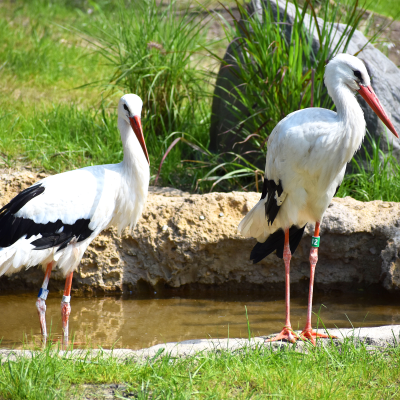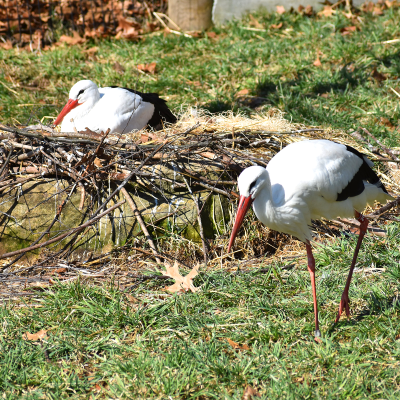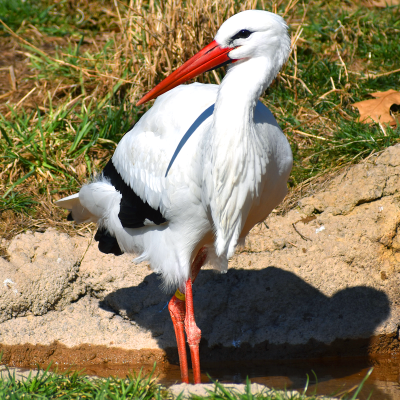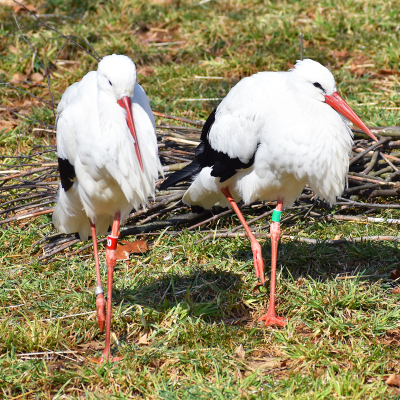About White Storks
White storks are large wading birds that stand at about 3.5 feet tall and have a wingspan of roughly 5 feet. These birds are covered in white feathers and have black primary feathers at the tips of their wings. They have long slender legs and long sharp, thin bills that are bright orange in color. Males tend to be larger than females on average, but other than that, males and females look the same. Storks are active during the day and, when not protecting a chick, they are typically not territorial. White storks are opportunistic omnivores who will swallow a prey item whole if it is small enough. Otherwise, they will kill their prey and tear it into pieces small enough to swallow. White storks play a large role in keeping the populations of many small freshwater animals from getting too large. Their young also provide food for hawks and eagles.
Storks are known to be long-lived birds. The oldest native bird on record lived to be 25 years old, while individuals in human care have been known to live up to 48 years. Storks are also known for their elaborate mating dances. White storks have their own unique “dance” in which the male will start off by crouching over the prospective nest that he has built, then shaking his head back and forth. Next, both the male and female will extend their heads, flap their wings and clack their bills to create a clattering sound. This “dance” is done every year, even with previously established mating pairs, and is thought to cement a bond. These storks are socially monogamous, meaning that the same pair will raise offspring together.
White storks tend to live in loosely formed groups with one another. During the breeding season, non-breeding individuals will form groups of up to 40 or 50, and during migration, storks can form groups of hundreds or even thousands. The sheer numbers of these groups and their carnivorous habits make it essential for these flocks to fly to foraging areas and take advantage of soaring and gliding whenever possible. Storks can sometimes be seen riding thermals and taking advantage of patterns of rising air along migration routes.
White Stork at the Akron Zoo
The white storks can be found in the Landon & Cynthia Knight Pride of Africa area. They share their habitat with Speke’s gazelles and guineafowl.
- Odessa – female, yellow band, born May 1, 2016
- Muranga – female, green band, born May 4, 2015
- Gibraltar – male, blue band, born May 10, 2017
- Kampala - male, red band, born May 8, 2017
- Tashi – female, born June 1, 2022 to Muranga and Kampala





